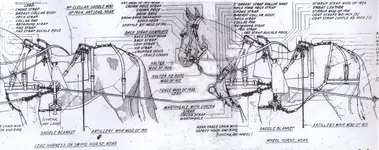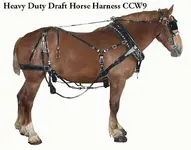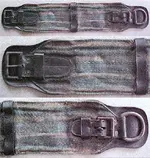Your guess that it is a "horse tack" (horse harness) buckle is correct... but (as Stefen said) incorrect that it is a cinch-strap buckle. Specifically, it is a "swedge" center-bar harness buckle... according to the illustration and label in the 1907-dated J.M. Ellers & Co. Saddlery Hardware mail-order catalog. See page 110, bottom right, viewable for free online, here:
https://archive.org/details/catalogueno200jmei
For CORRECTLY identifying the type and intended purpose of buckles which have a center-bar with tongue (or an end-bar with tongue), it is very important to measure the width of the INSIDE of the buckle at the bar's location. That measurement tells you the width of the leather strap which the buckle was intended to be used with. The ruler in your third photo shows your buckle was made for use on a 1.5"-wide strap.
Also, very importantly for correctly identifying it:
1- your buckle's center-bar is backset/offset from the buckle's frame, and
2- the center-bar is backset/offset by a LOT... almost 3/4-inch.
The purpose of the center-bar being backset/offset is to accommodate more than just one leather strap going through it at the same time. Being backset by almost 3/4-inch means your buckle was made to accommodate at least three "layers" of straps passing through it... AND, those straps were very thick (heavy-duty) straps. Reins-straps and bridle-straps are light-duty, not very thick. So, your buckle was made for use on heavy-duty harness, such as wagon-pulling or plow harness.
I hope diggers here who want to learn to CORRECTLY identify the harness-buckles (and other "horse tack") they dig will bookmark the link I posted to the 1907 catalog of such equipment. (Also, please bookmark other relic identification info links posted by other ID-helpers at T-Net.) I'm 65 years old, which means I might not be "around" to answer relic-ID requests for many more years.
After-posting note: I see BosnMate, Stefen, and Silver Searcher posted additional helpful info while I was typing my lengthy reply. Nice work, guys.















